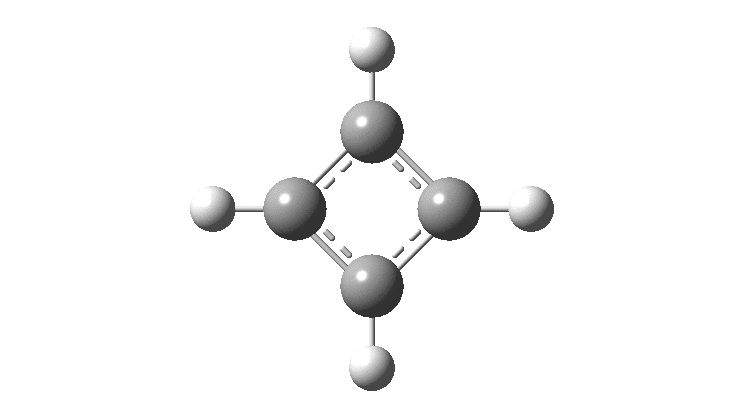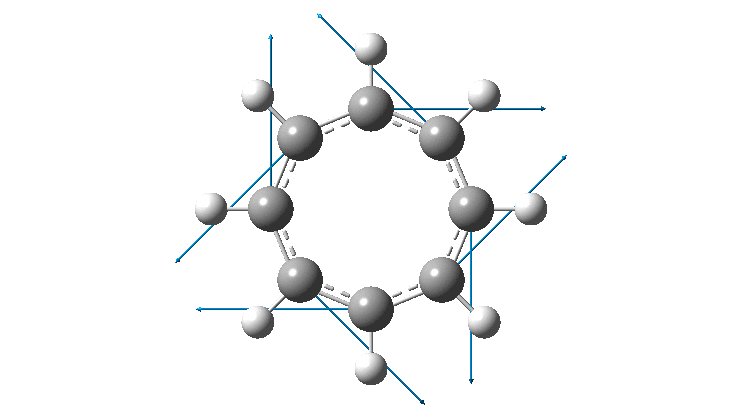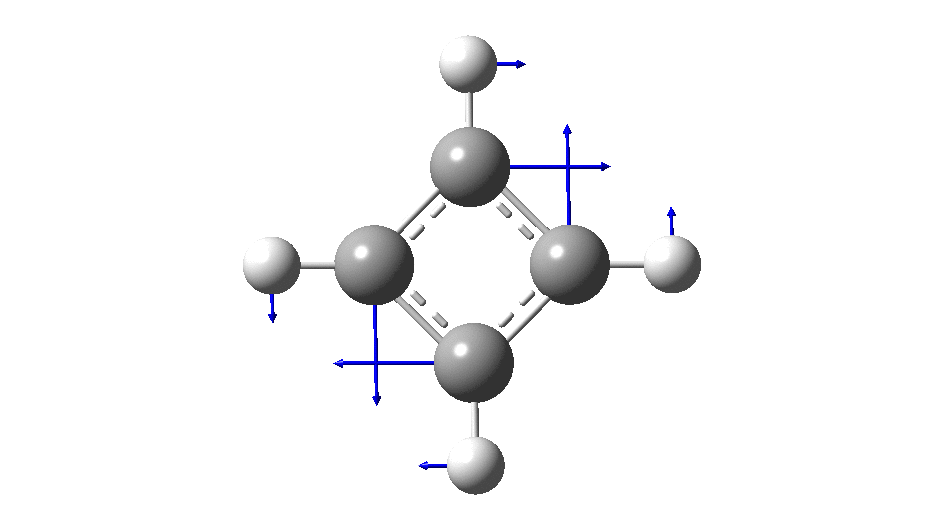This is another of those posts that has morphed from an earlier one noting the death of the great chemist George Olah. The discussion about the norbornyl cation concentrated on whether this species existed in a single minimum symmetric energy well (the non-classical Winstein/Olah proposal) or a double minimum well connected by a symmetric transition state (the classical Brown proposal). In a comment on the post, I added other examples in chemistry of single/double minima, mapped here to non-classical/classical structures. I now expand on the examples related to small aromatic or anti-aromatic rings.
| Examples of symmetric energy potentials | ||
|---|---|---|
| System | Classical with 1 imaginary normal mode | Non-classical with 0 imaginary modes |
| Norbornyl cation | TS for [1,2] sigmatropic | Minimum, this post |
| Singlet [6], [10]; 4n+2 annulenes | – | Minimum with Kekulé vibration |
| Singlet [4], [8]; 4n annulenes | TS for bond shift, 1 imaginary normal mode | – |
| Triplet [4], [8]; 4n annulenes | – | Minimum, with Kekulé vibration (?) |
| Semibullvalenes | TS for [3,3] sigmatropic | Minimum |
| Strong Hydrogen bonds | TS for proton transfer | Minimum |
| SN2 substitutions | TS for substitution (C) | Minimum (Si) |
| Jahn-Teller distortions | Dynamic Jahn-Teller effects | No Jahn-Teller distortions |
In the table above, you might notice a (?) associated with the entry for (aromatic) triplet state 4n annulenes. Here I expand the ? by considering triplet cyclobutadiene and triplet cyclo-octatetraene (ωB97XD/Def2-TZVPP, 10.14469/hpc/2241 and 10.14469/hpc/2242 respectively). Each has a normal vibrational mode shown animated below, which oscillates between the two Kekulé representations of the molecule with wavenumbers of 1397 and 1744 cm-1 respectively. These Kekulé modes are both real, which indicates that the symmetric species (D4h and D8h symmetry) is in each case the equilibrium minimum energy position (rCC 1.431 and 1.395Å). For comparison the aromatic singlet state 4n+2 annulene benzene (rCC 1.387Å) has the value 1339 cm-1. Notice that both the triplet state wavenumbers are elevated compared to singlet benzene, because in each case the triplet ring π-bond orders are lower, thus decreasing the natural tendency of the π-system to desymmetrise the ring.[cite]10.1021/cr990363l[/cite]


To complete the theme, I will look at singlet cyclobutadiene. According to the table above, the symmetric form should be a transition state (TS) for bond shifting, with one imaginary normal mode. To calculate this mode, one has to use a method that correctly reflects the symmetry, in this case a CASSCF(4,4)/6-311G(d,p) wavefunction (DOI: 10.14469/hpc/2244). The mode (rCC 1.444Å) shown below has a wavenumber of 1477i cm-1; its vectors of course resemble those of the triplet mode, but its force constant is now negative rather than positive!

At first sight any connection between the property of the norbornyl cation at the core of the controversies all those decades ago and aromatic/antiaromatic rings might seem tenuous. But in the end many aspects of chemistry boil down to symmetries and from there to Évariste Galois, who started the ball rolling.
Tags: antiaromaticity, aromaticity, Évariste Galois, Carbocation, Chemistry, equilibrium minimum energy position, George Andrew Olah, George Olah, great chemist, Jahn-Teller, minimum symmetric energy, Olah, Physical organic chemistry, Saul Winstein, symmetric energy potentials